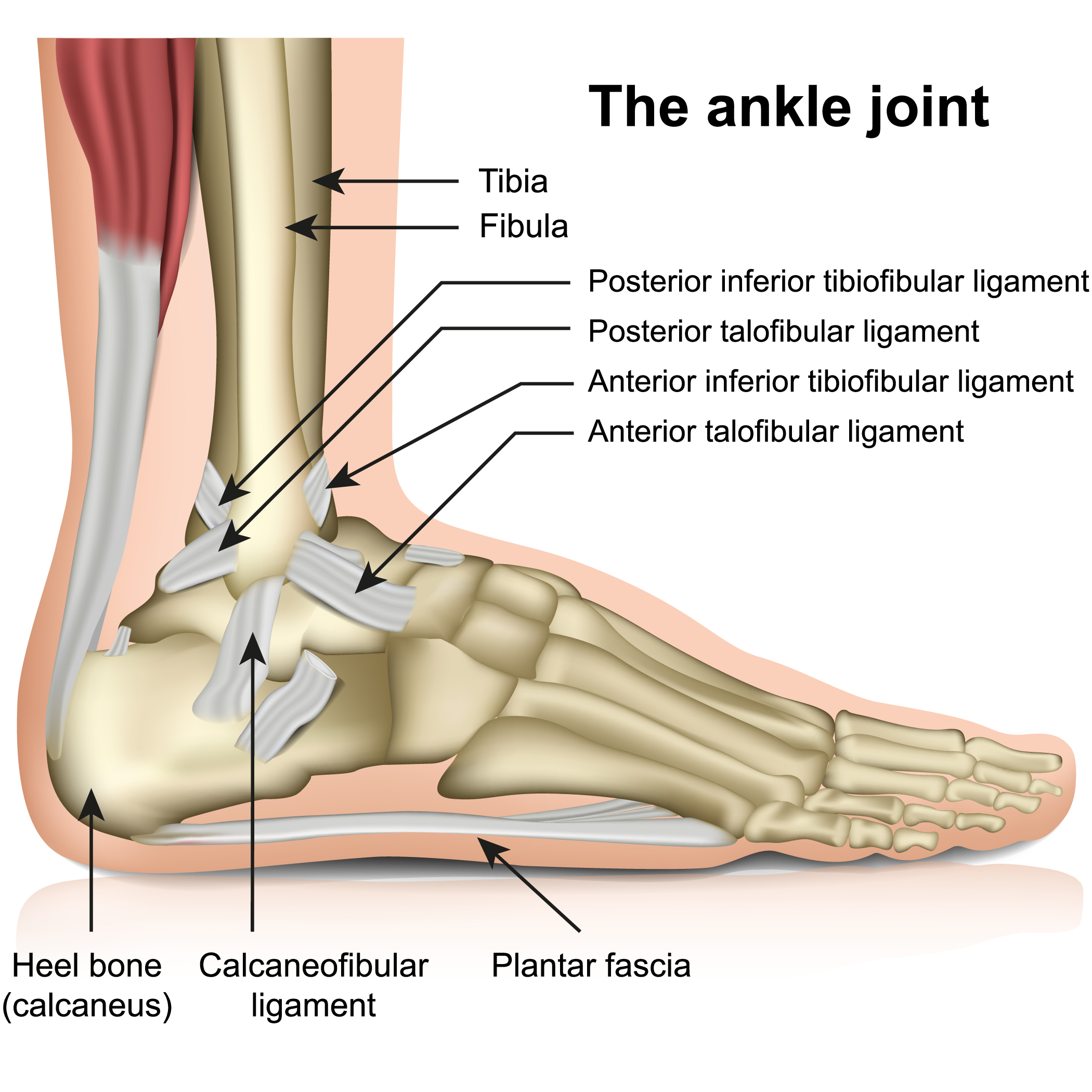Ankle replacement surgery, also known as total ankle arthroplasty, is a surgical procedure designed to replace a damaged or diseased ankle joint with an artificial implant. This procedure is typically considered for individuals suffering from severe ankle arthritis or other conditions that lead to chronic pain and impaired function.
The goal of ankle replacement surgery is to relieve pain, restore function, and improve the quality of life for patients who have exhausted other treatment options.
Anatomy of the Ankle Joint
Understanding the anatomy of the ankle joint is crucial to appreciating the impact of ankle replacement surgery. The ankle joint, or tibiotalar joint, is formed where the tibia (shinbone) meets the talus (a bone in the foot). The ends of these bones are covered with articular cartilage, which allows smooth movement of the joint.
The ankle joint is stabilised by ligaments and supported by surrounding muscles and tendons. When the cartilage is damaged or worn away, as in arthritis, it leads to pain, swelling, and decreased mobility.
Conditions Leading to Ankle Replacement
Several conditions can lead to the need for ankle replacement surgery:
Osteoarthritis
Osteoarthritis is a degenerative joint disease characterized by the breakdown of cartilage. It is the most common reason for ankle replacement surgery. Factors such as aging, previous injuries, and repetitive stress on the joint contribute to the development of osteoarthritis.
Rheumatoid Arthritis
Rheumatoid arthritis is an autoimmune disease that causes inflammation in the joints. This chronic inflammation can lead to the destruction of cartilage and bone, significantly affecting the ankle joint.
Post-Traumatic Arthritis
Post-traumatic arthritis develops after an injury to the ankle, such as fractures or severe sprains. Even after the injury heals, it can lead to chronic joint pain and degeneration.
Other Conditions
Conditions such as avascular necrosis (death of bone tissue due to lack of blood supply) and certain congenital deformities can also necessitate ankle replacement surgery.
Symptoms Indicating the Need for Ankle Replacement
Individuals suffering from severe ankle arthritis or related conditions may experience a range of symptoms, including:
- Chronic Pain: Persistent pain that affects daily activities and quality of life.
- Stiffness: Reduced range of motion and difficulty moving the ankle.
- Swelling: Swelling around the joint, which can vary in intensity.
- Deformity: Visible changes in the shape of the ankle joint.
- Instability: Feeling of the ankle giving way or being unable to support weight properly.
- Reduced Mobility: Difficulty walking, climbing stairs, or performing other weight-bearing activities.
When these symptoms become severe and non-surgical treatments such as medication, physical therapy, and orthotics no longer provide relief, ankle replacement surgery may be considered.
Non-Surgical Treatment Options
Before opting for ankle replacement surgery, various non-surgical treatments are typically attempted to manage symptoms and improve function. These treatments include:
Medications
- Pain Relievers: Over-the-counter pain relievers like acetaminophen and nonsteroidal anti-inflammatory drugs (NSAIDs) can help manage pain and inflammation.
- Corticosteroids: Injections of corticosteroids into the joint can reduce inflammation and provide temporary pain relief.
Physical Therapy
- Exercise: Specific exercises can strengthen the muscles around the ankle, improve flexibility, and enhance joint stability.
- Manual Therapy: Techniques such as joint mobilization and soft tissue massage can alleviate pain and improve movement.
Orthotics and Bracing
- Shoe Inserts: Custom orthotic devices can provide better support and alignment, reducing stress on the ankle joint.
- Ankle Braces: Braces can stabilize the ankle and prevent excessive movement that leads to pain.
Lifestyle Modifications
- Weight Management: Maintaining a healthy weight can reduce stress on the ankle joint.
- Activity Modification: Avoiding high-impact activities and opting for low-impact exercises like swimming or cycling can help manage symptoms.
Overview of Ankle Replacement Surgery
Ankle replacement surgery involves removing the damaged portions of the ankle joint and replacing them with artificial components. The procedure typically includes the following steps:
- Anesthesia: The patient is given general anesthesia or a spinal block to numb the lower half of the body.
- Incision: The surgeon makes an incision on the front or side of the ankle to access the joint.
- Removal of Damaged Tissue: The damaged cartilage and bone are removed from the tibia and talus.
- Placement of Implants: The surgeon inserts metal components into the prepared ends of the tibia and talus. A plastic spacer is placed between these metal components to allow smooth movement.
- Closure: The incision is closed with sutures or staples, and a bandage is applied.
Types of Implants
Several types of implants can be used in ankle replacement surgery:
- Fixed-Bearing Implants: These implants have a fixed plastic spacer, providing stability but potentially limiting range of motion.
- Mobile-Bearing Implants: These implants allow the plastic spacer to move, potentially offering a greater range of motion and more natural movement.
The choice of implant depends on factors such as the patient’s anatomy, activity level, and the surgeon’s preference.
Benefits of Ankle Replacement Surgery
Ankle replacement surgery can offer several benefits, including:
Pain Relief
One of the primary goals of ankle replacement surgery is to relieve chronic pain caused by arthritis or other conditions. By removing the damaged joint surfaces and replacing them with artificial components, the procedure can significantly reduce or eliminate pain.
Improved Mobility
Ankle replacement surgery can restore a more natural range of motion to the joint, allowing patients to walk and perform daily activities with greater ease and comfort.
Enhanced Quality of Life
By reducing pain and improving mobility, ankle replacement surgery can enhance the overall quality of life for patients. This includes the ability to return to activities that were previously limited by pain and stiffness.
Long-Term Durability
Modern ankle replacement implants are designed to be durable and long-lasting. While they may not last a lifetime, many patients experience significant improvement in their symptoms for many years.
Alternative to Fusion
Ankle replacement is an alternative to ankle fusion (arthrodesis), another surgical option for severe ankle arthritis. An ankle fusion involves permanently joining the bones of the ankle joint, which can relieve pain but also limits mobility. Ankle replacement preserves joint motion, making it a preferred option for many patients.
Risks and Complications
As with any surgical procedure, ankle replacement surgery carries certain risks and potential complications. These can include:
Infection
Infection at the surgical site is a potential risk. Preventative measures, such as antibiotics and sterile surgical techniques, are used to minimize this risk.
Blood Clots
Blood clots can form in the veins of the legs (deep vein thrombosis) or travel to the lungs (pulmonary embolism). Measures such as blood-thinning medications and compression stockings are used to prevent this complication.
Nerve or Blood Vessel Damage
During surgery, there is a risk of injury to the nerves or blood vessels around the ankle. This can lead to numbness, weakness, or circulatory issues.
Loosening or Wear of the Implant
Over time, the artificial components of the ankle joint may loosen or wear out. This can lead to pain and may require revision surgery to replace the worn components.
Fractures
There is a risk of bone fractures around the implant, either during the surgery or afterward. These fractures may require additional treatment.
Persistent Pain or Stiffness
In some cases, patients may continue to experience pain or stiffness in the ankle after surgery. This can be due to various factors, including the body’s response to the implant or other underlying conditions.
Implant Failure
Although rare, the implanted components can fail due to mechanical issues or the body’s reaction to the materials used.
Recovery and Rehabilitation
Recovery from ankle replacement surgery involves several stages and requires a commitment to rehabilitation to achieve the best possible outcome. The typical recovery process includes:
Hospital Stay
Most patients stay in the hospital for a few days after surgery. During this time, pain management and monitoring for any immediate complications are prioritized.
Immobilisation
The ankle is usually immobilised with a splint or cast for a few weeks to protect the joint and allow initial healing. Patients are typically advised to keep weight off the affected leg during this period.
Physical Therapy
Physical therapy is a crucial part of the recovery process. A physical therapist will design a program to gradually restore strength, flexibility, and range of motion to the ankle. Therapy typically starts with gentle exercises and progresses to more intensive activities as healing occurs.
Weight-Bearing
Weight-bearing is usually restricted for several weeks after surgery. Gradually, patients will begin to put weight on the affected leg, often with the aid of crutches or a walker. The timing of weight-bearing activities depends on the surgeon’s assessment of the healing process.
Follow-Up Visits
Regular follow-up visits with the surgeon are essential to monitor healing, assess the function of the implant, and address any concerns. X-rays may be taken to ensure that the implant is properly positioned and that bone healing is progressing.
Return to Activities
Most patients can resume normal daily activities within a few months, but it may take up to a year to fully recover and return to more strenuous activities. High-impact activities, such as running or jumping, may be restricted to prolong the life of the implant and prevent complications.
Should I Have Ankle Replacement Surgery?
Not everyone with ankle arthritis or related conditions is a candidate for ankle replacement surgery. Ideal candidates typically meet the following criteria:
Severe Arthritis
Candidates should have severe arthritis that significantly impacts their quality of life and does not respond to conservative treatments.
Age and Activity Level
Ankle replacement is often recommended for older adults who have lower activity levels. Younger, more active patients may be better suited for alternative treatments, such as ankle fusion.
Overall Health
Candidates should be in good overall health to undergo surgery and participate in postoperative rehabilitation. Conditions such as diabetes or peripheral vascular disease can affect healing and may influence candidacy.
Bone Quality
Good bone quality is essential for the proper fixation of the implant. Patients with poor bone quality, such as those with osteoporosis, may not be suitable candidates for ankle replacement.
Alignment and Stability
Proper alignment and stability of the ankle joint are necessary for the success of the implant. Severe deformities or instability may require additional procedures to correct before or during ankle replacement surgery.
Alternatives to Ankle Replacement
For patients who are not suitable candidates for ankle replacement surgery or prefer other treatment options, several alternatives are available:
Ankle Fusion (Arthrodesis)
Ankle fusion involves permanently joining the bones of the ankle joint. This procedure can relieve pain and provide stability but eliminates joint motion. It is often recommended for younger, more active patients or those with severe deformities.
Ankle Distraction Arthroplasty
This procedure involves using an external frame to gently pull the ankle joint apart, allowing new cartilage to grow. It is a less common alternative that can preserve joint motion and reduce pain.
Osteotomy
An osteotomy involves cutting and realigning bones to improve joint alignment and function. This procedure can be effective for certain types of arthritis or deformities but may not provide long-term relief for severe arthritis.
Arthroscopic Debridement
This minimally invasive procedure involves using a small camera and instruments to clean out the joint and remove damaged tissue. It can provide temporary relief for mild to moderate arthritis but may not be sufficient for severe cases.
Conclusion
In this blog, we hope we have help you answer the question ‘should I have ankle replacement surgery?’
Ankle replacement surgery is a significant procedure that can provide substantial pain relief and improved function for individuals suffering from severe ankle arthritis or other debilitating conditions. It offers several benefits, including pain relief, improved mobility, and enhanced quality of life.
However, the decision of if you should have ankle replacement surgery or not should be made after careful consideration of the potential risks and benefits, as well as a thorough evaluation by an orthopedic specialist.
Patients should exhaust non-surgical treatment options before considering surgery and should discuss their specific condition, overall health, and lifestyle with their healthcare provider to determine the most appropriate treatment plan.
For those who are suitable candidates, ankle replacement surgery can be a life-changing procedure that restores mobility and reduces pain, allowing them to return to many of the activities they enjoy.
If you like to discuss your options and see if you are suitable for an ankle replacement surgery, get in touch with our Consultants today.






